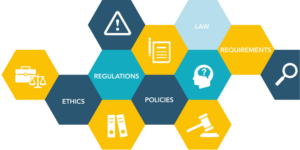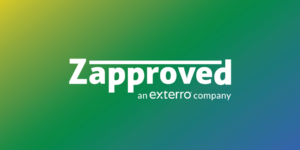U.S. ex rel. Proctor v. Safeway, Inc., No. 11-cv-3406 (C.D. Ill. Mar. 8, 2018)
In this qui tam action, the defendant previously produced hundreds of thousands of native-format documents without reviewing or numbering them. The court found this inadequate and ordered the defendant to both review the documents within its production for responsiveness and apply Bates numbers to the responsive documents.
Thomas Proctor alleged that the defendant, Safeway, Inc., was running a fraudulent pharmacy pricing scheme to drive up its profits from government health programs. At the outset of discovery, Proctor requested a range of electronically stored information (ESI), including emails and pharmacy transaction (PDX) data.
That request asked that Safeway produce the documents in native format or as searchable images if the data already existed in a litigation database. If Proctor would be unable to review any of the provided discovery in Microsoft Office, he also asked that Safeway produce the data “with instructions and software necessary” for review.
In response, Safeway produced 260,640 Bates-numbered documents — which Proctor did not object to — and around 575,000 other documents in native format. Proctor stated that some of those native-format documents “were a mass of incomprehensible special characters.” Safeway said that it collected those files using a keyword search but did not review them for responsiveness.
Over a year after the original request for production, Safeway had not produced any PDX data.
Proctor moved to compel Safeway to do three things:
- review the native-format files for responsiveness,
- produce those responsive documents as Bates-numbered image files in TIFF or PDF format, and
- immediately produce the PDX data.
Safeway argued that this request was “overly burdensome” and “cost prohibitive.” Further, it claimed that it could not satisfy this request within the agreed discovery schedule. Safeway noted that, at some point after it gave Proctor the 575,000 files at issue, it began using technology-assisted review (TAR) to review documents for responsiveness. Finally, Safeway asked that if the court did order it to produce image files, that the court require Proctor to “pay a significant part of the costs” of that conversion.
The court began its analysis by noting that under Federal Rule of Civil Procedure 34(a), a party “must produce responsive unprivileged documents within its custody and control that are relevant for purposes of discovery.”
All the files that Safeway produced must be in a format that Proctor could use. Because “the parties and the court must have a way to identify each document,” Safeway must Bates number every file. However, Safeway was “not required to produce documents in more than one form.” The court therefore denied Proctor’s request for Safeway to produce image files. That rendered Safeway’s request for Proctor to share in the costs of file conversion moot.
Most importantly, Safeway must review its production for responsiveness. The court cited Federal Rule of Civil Procedure 26(g)(1) for the premise that “a party must make reasonable inquiry and certify that discovery is complete and responsive.” Here, Safeway failed to comply with the rule, as its initial keyword search “was not a reasonable inquiry.”
The court gave Safeway just two weeks to complete its TAR review and identify, Bates number, and produce all responsive files. And, after its delay of more than one year, the court gave Safeway one week to produce the PDX data.
Takeaways on Responding to Requests for Production
Safeway’s errors here are so egregious that they should not need to be warned against. First, do not drag your feet in responding to discovery requests. If you know that you will need more time to respond, promptly confer with your opponent about revising the discovery schedule.
Second, you must review any potential production for responsiveness (not to mention privilege), and you must do so before — rather than after — producing that information. If Safeway had completed its review in good faith, it could have also avoided the third critical error: producing at least a portion of its production as unusable nonsense.




